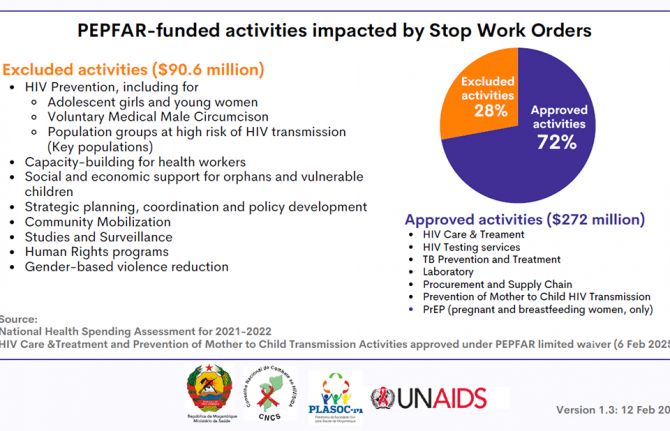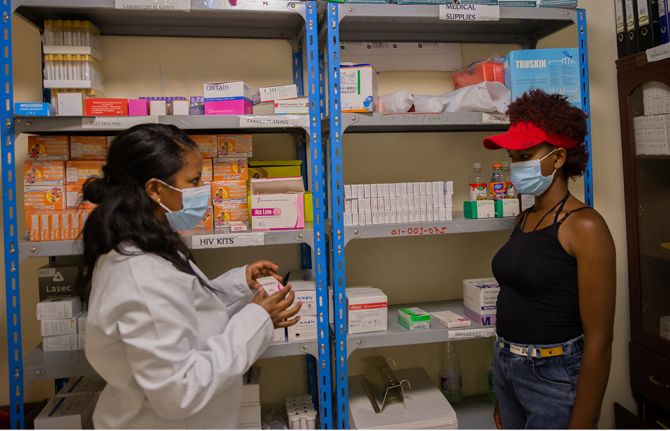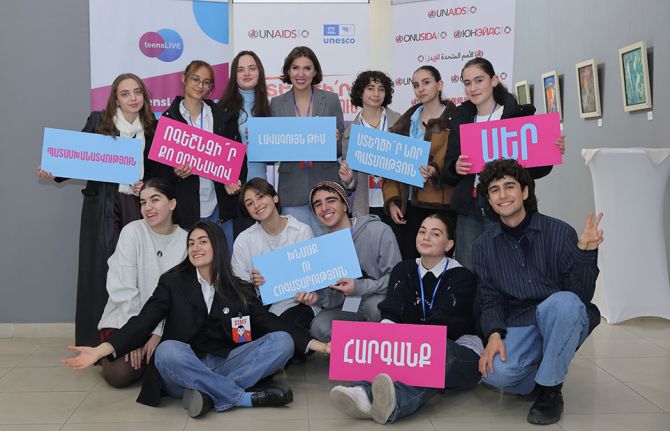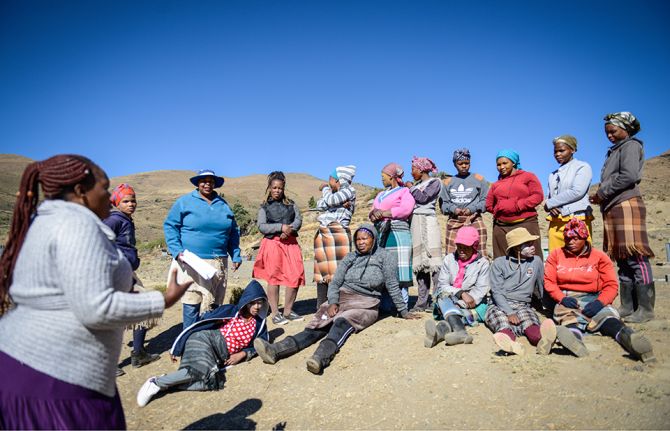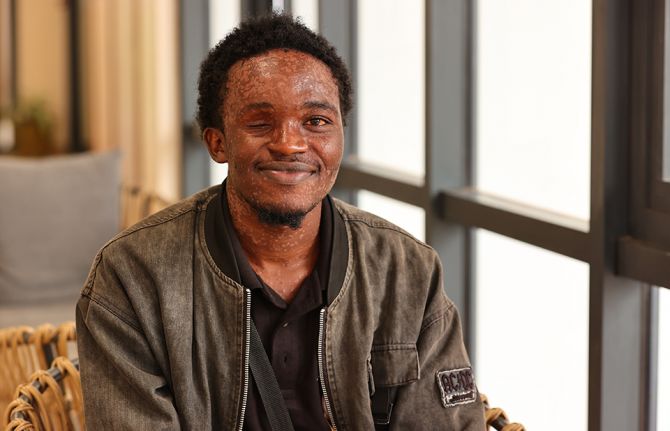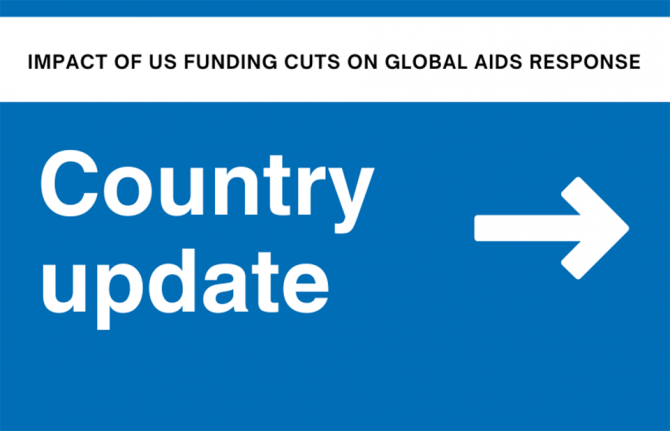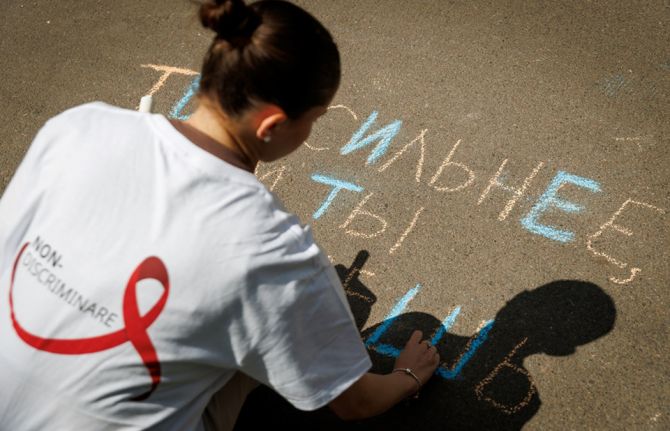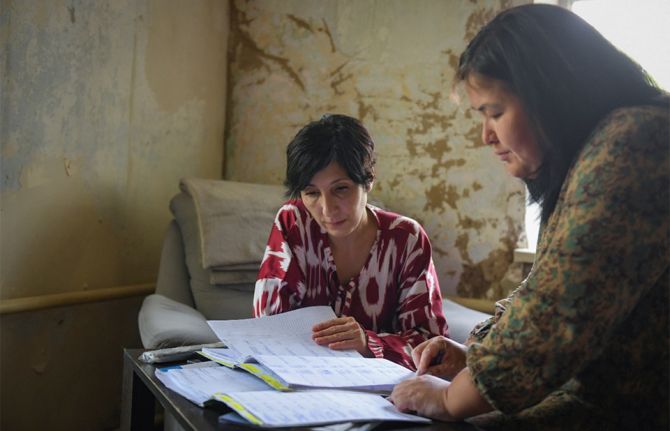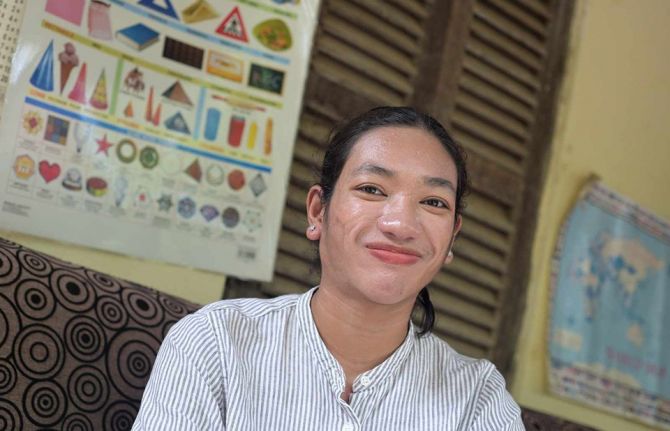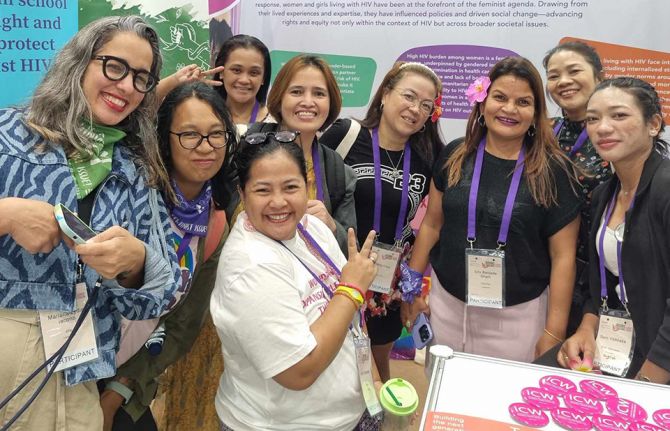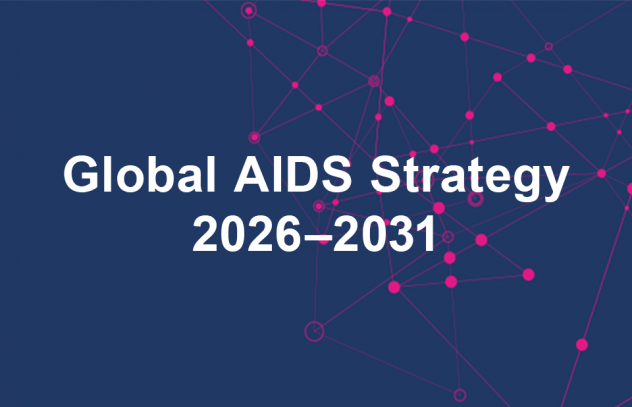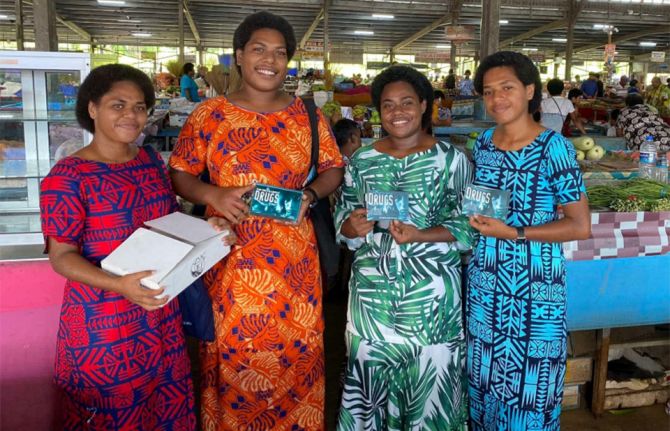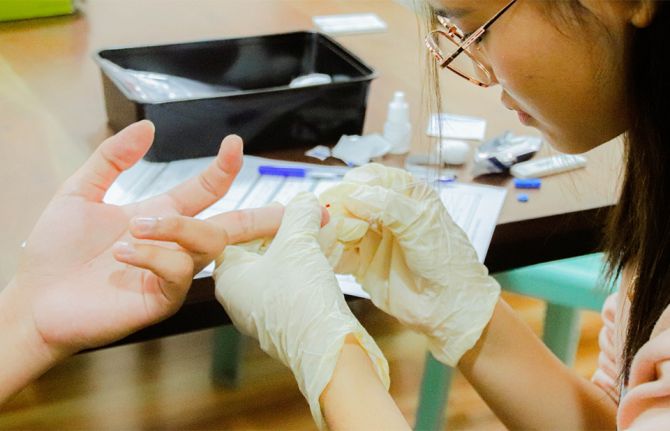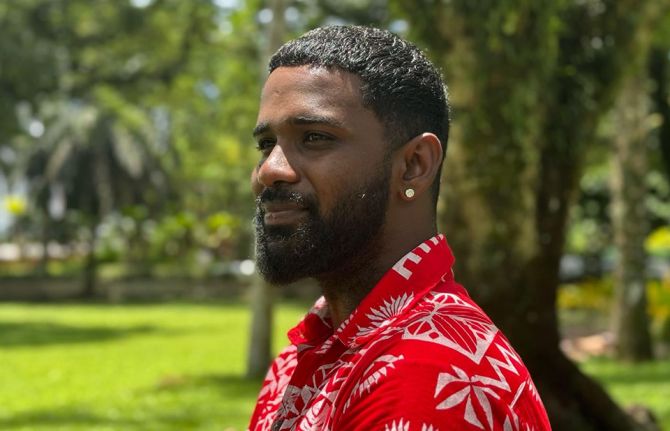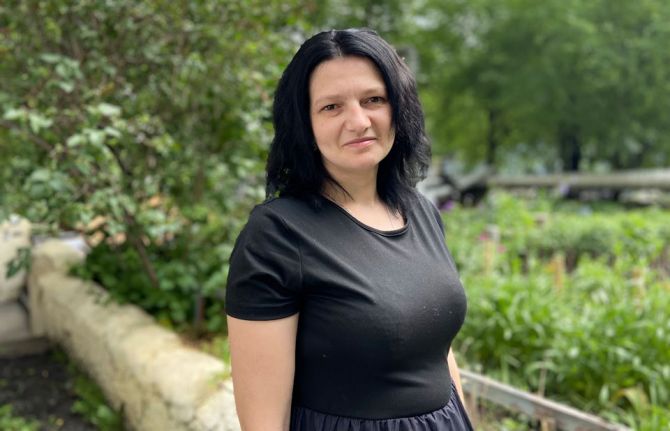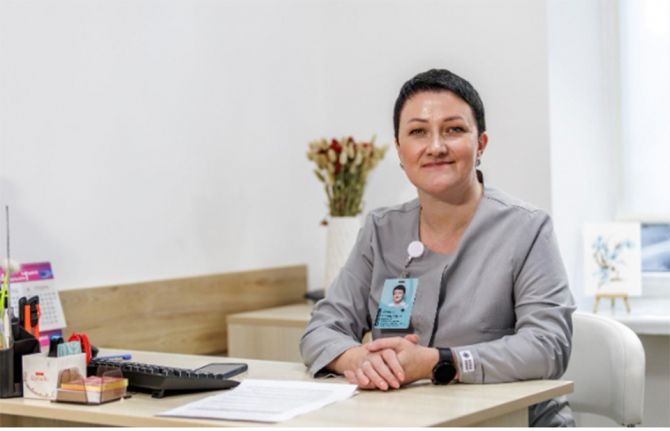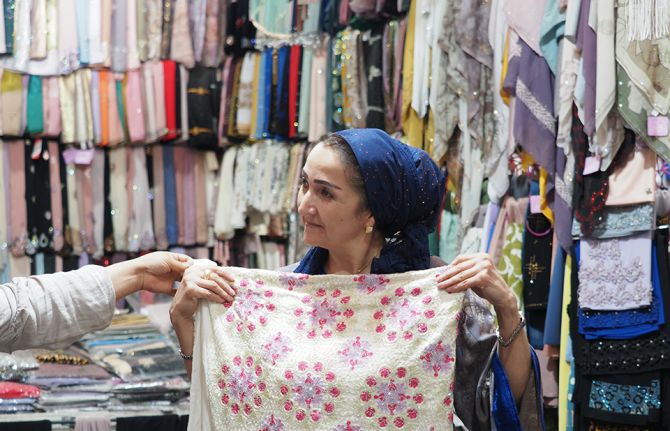
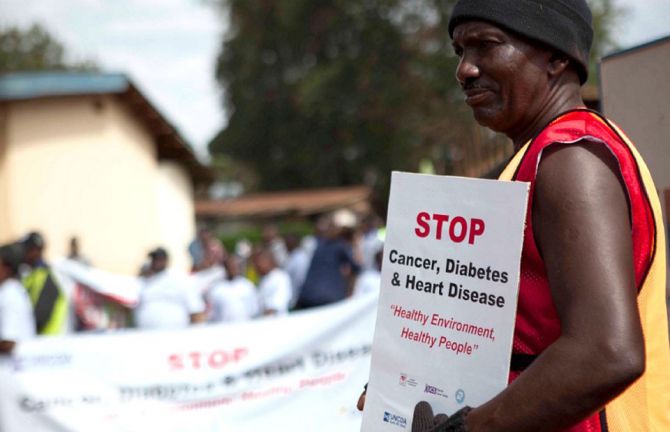
Feature Story
Learning lessons from the AIDS response to control NCDs
27 September 2018
27 September 2018 27 September 2018Noncommunicable diseases (NCDs) are by far the biggest killers of people worldwide, responsible for 71% of all deaths globally. Defined by the World Health Organization as diseases of long duration and generally slow progression, the four main types of NCDs, which account for 80% of all NDC premature deaths, are cardiovascular diseases, cancer, chronic respiratory diseases and diabetes.
People of all ages can be affected by NCDs, but they tend to affect older people. With increasing numbers of people living with HIV accessing treatment and hence living longer, people living with HIV are increasingly falling ill with NCDs. Being HIV-positive, however, also increases the risk of developing NCDs, either because of the infection itself or owing to side-effects of the medicines used to treat HIV. The care that people living with HIV receive therefore increasingly needs to include care for NCDs.
Since people in many low- and middle-income countries are smoking more, drinking alcohol more and becoming less active, and their diets are changing, rates of NCDs are increasing. Age-adjusted death rates from NCDs are nearly twice as high in low- and middle-income countries as in high-income countries.
However, the successes to date in the AIDS response show what can be done if countries take decisive action. It is becoming increasingly clear that if the world is to control NCDs, the lessons of the AIDS response need to be learned and applied to the response to NCDs.
Health-care systems in regions that are home to most people living with HIV were designed to primarily address acute, rather than chronic, illnesses. However, HIV programmes in those same countries can be good models for how to step up services for NCDs, showing how to provide continuity of care, support adherence to treatment and engage communities.
The AIDS response has had a huge impact on global health. The impact of early diagnosis and treatment, HIV services being in many countries the entry point for broader health services, the importance of tackling poverty and other social determinants of health, raising community awareness and creating demand for services, the importance of putting civil society and communities in the centre, with their engagement, activism, advocacy and mobilization—these are all key lessons from the AIDS response that can guide the response to NCDs.
“The response to HIV has shown that the impossible is possible,” said Michel Sidibé, the Executive Director of UNAIDS. “UNAIDS will work with our partners in the United Nations system to share best practices from the AIDS response to guide countries, communities and other partners.”
As part of the world’s effort to combat NCDs, on 27 September countries will come together in New York, United States of America, at the United Nations for the Third High-Level Meeting on the Prevention and Control of Noncommunicable Diseases. UNAIDS is a part of the United Nations Interagency Task Force on the Prevention and Control of Noncommunicable Diseases and will be sharing its knowledge at the high-level meeting.
Related

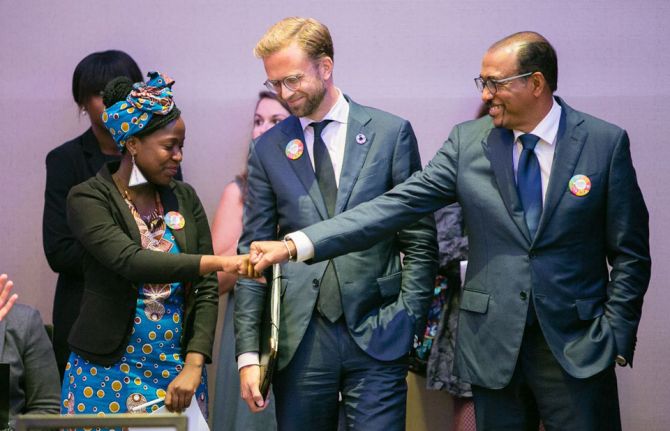
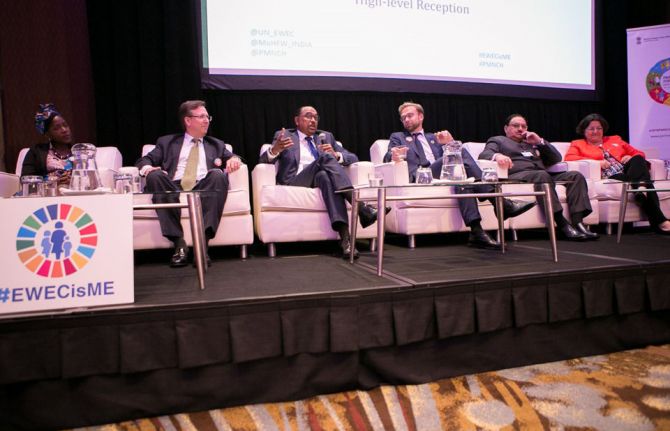
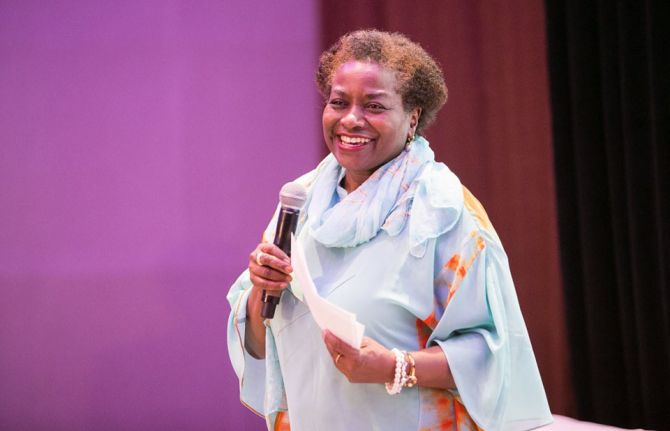
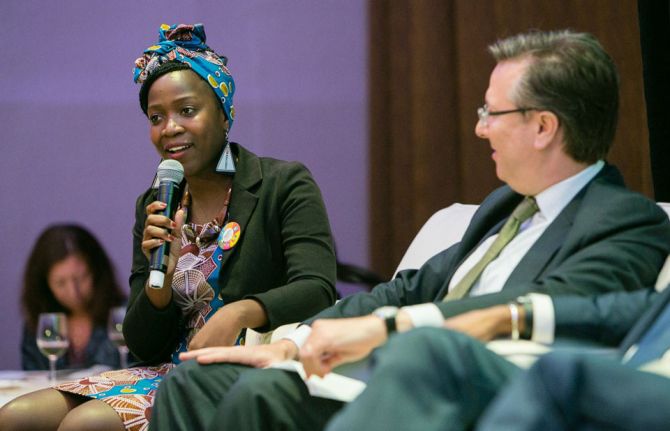
Feature Story
Uniting for every woman and every child
26 September 2018
26 September 2018 26 September 2018The health of women, children and adolescents is the cornerstone of public health. Healthy women and children create healthy societies and if adolescents are helped to realize their rights to health, well-being and education they become equipped to attain their full potential as adults. However, each year approximately 5.9 million children die before the age of five years and 289 000 women die in pregnancy and childbirth.
As part of the United Nations response to this crisis, the former United Nations Secretary-General, Ban Ki-moon, launched an initiative during the 2010 United Nations Millennium Development Goals summit to save and improve the lives of millions of women, children and adolescents around the world.
The initiative, Every Woman Every Child, was an unprecedented global movement that mobilized action by governments, the private sector, academia and civil society to address the major health challenges facing women, children and adolescents. As part of its work, the movement put into action a Global Strategy for Women’s and Children’s Health, a road map to galvanize political leadership and resources and to create a powerful multistakeholder movement for health.
The technical work of the movement is done by the H6 partnership, currently chaired by UNAIDS, which puts to work the collective strengths of UNAIDS, the United Nations Population Fund, the United Nations Children’s Fund, UN Women, the World Health Organization and the World Bank Group to operationalize the Global Strategy for Women’s and Children’s Health.
Today, spearheaded by the current United Nations Secretary-General, António Guterres, Every Woman Every Child is a multistakeholder platform that is saving millions of lives by placing women, children and adolescents at the centre of universal health coverage and the Sustainable Development Goals.
To highlight the need for continued political momentum around the movement, Every Woman Every Child held a high-level reception during the 73rd Session of the United Nations General Assembly in New York, United States of America, to underscore the importance of commitment, action and accountability by high-profile global leaders and influencers.
At the 2010 launch, more than US$ 40 billion was pledged, with numerous partners making additional financial, policy and service delivery commitments. However, speakers at the event highlighted that more help is urgently needed.
They stressed that the international community must pledge additional commitments to take Every Woman Every Child past the tipping point, which, the organizers say, would save the lives of 16 million women and children, prevent 33 million unwanted pregnancies, end stunting in 88 million children and protect 120 million children from pneumonia.
Quotes
“Today’s challenges require a new response. Every Women Every Child and the deep commitment of its partners will be critical to this.”
“We say that it is teamwork that makes the dream work and our partnership is one of the best examples of how we can deliver together, the United Nations delivering as one.”
“We are doing a lot of work in India—from birth to adolescence, we are putting in place numerous health programmes and initiatives. We are proud that our Prime Minister has taken a bold decision to help the most deprived and the most marginalized. One hundred million families have been identified across India, all of whom will benefit from support for health care so that they are not out of pocket for taking care of their health.”
“For too long we have simply not done enough. More than 5 million children die every year. That is like the whole population of my country being wiped out. We know that 35 million lives can be saved between now and 2030, but only if the Global Financing Facility is fully funded. We will be holding a replenishment in November—there is no better reason to come to Norway.”
“It is a transformative moment. It’s about leadership and about transforming leadership in the global health arena. It’s also about innovation, about how we do things differently. Which is why the H6 is so important—it is an entry point for United Nation reform—one results framework, one vision—demonstrating what we can do differently.”
“It’s so important that young people are engaged in these programmes, involved in these programmes and leading these programmes. With young people taking the lead, you will have the greatest impact. We need to do business differently, and to do this we need to take a people-centred approach and, most importantly, work together.”

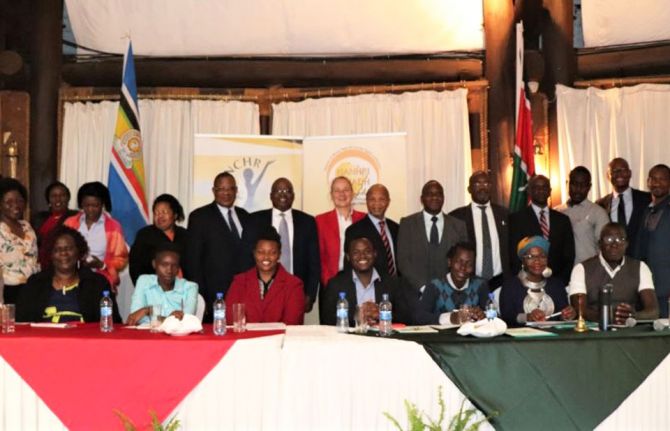
Feature Story
National human rights institutions in eastern and southern Africa emphasize the right to health
19 September 2018
19 September 2018 19 September 2018We must protect, promote and fulfil human rights if we are to achieve HIV and health targets on the African continent and ensure access to HIV prevention, treatment, care and support services for all. This was the main call to action during a recent regional consultation for national human rights institutions and parliamentarians held in Nairobi, Kenya.
“This conference is indeed very timely for Africa, as it offers an opportunity to deliberate on how best national human rights institutions can work with parliaments in fostering the right to health through building strong partnerships,” said Enid Muthoni, the International Development Law Organization’s Country Director in Kenya.
National human rights institutions play a key role in promoting and protecting HIV-related human rights, including the right to health, and in ensuring that these are effectively addressed at the local and national levels. They serve as an important bridge between government, civil society and other stakeholders, helping to empower duty-bearers to respond to issues related to the right to health and rights-holders to realize these rights.
“Human rights and health are inherent for everyone. National human rights institutions, parliament and civil society and everyone at an individual level has a role to play in promoting the right to health,” said Madeleine Nirere, Chair of the Network of African National Human Rights Institutions.
The right to health is especially important to promote among people being left behind by the AIDS response, including key populations—such as gay men and other men who have sex with men, sex workers, transgender people and people who inject drugs—to claim their rights to non-discrimination, HIV prevention and treatment services, information and education and freedom from sexual coercion and violence.
“If you have no health, you have nothing else. Everyone should therefore have a right to health,” said Miriam Were, former Chairperson of Kenya’s National AIDS Control Council and Champion for an AIDS-Free Generation.
The call to action from the consultation focused on a broad-reaching range of human rights issues, including promoting public–private partnerships and policies and actions to end stigma and discrimination in health-care settings and other institutional settings, such as schools and workplaces. The participants also called for the repeal of punitive laws, policies and practices that create barriers to access HIV and health services and appealed to countries to ratify and domesticate the many existing African human rights mechanisms.
“The call to action will enable national human rights institutions and parliamentarians to firmly express their determination to help achieve the health and HIV targets and operationalize the resolutions and mechanisms at our disposal,” said Jantine Jacobi, UNAIDS Country Director in Kenya.
Related resources
Region/country
Related

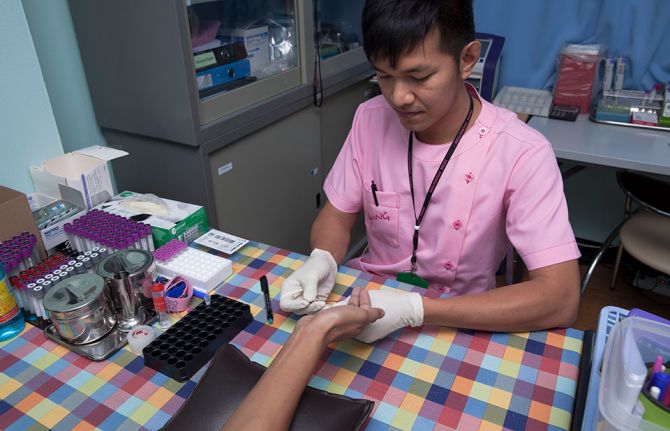
Feature Story
World AIDS Day 2018 theme encourages everyone to know their HIV status
17 September 2018
17 September 2018 17 September 2018This year’s theme for World AIDS Day, which will be marking its 30th anniversary on 1 December, will be “Know your status”.
Significant progress has been made in the AIDS response since 1988, and today three in four people living with HIV know their status. But we still have miles to go, as the latest UNAIDS report shows, and that includes reaching people living with HIV who do not know their status and ensuring that they are linked to quality care and prevention services.
HIV testing is essential for expanding treatment and ensuring that all people living with HIV can lead healthy and productive lives. It is also crucial to achieving the 90–90–90 targets and empowering people to make choices about HIV prevention so they can protect themselves and their loved ones.
Unfortunately, many barriers to HIV testing remain. Stigma and discrimination still deters people from taking an HIV test. Access to confidential HIV testing is still an issue of concern. Many people still only get tested after becoming ill and symptomatic.
The good news is that there are many new ways of expanding access to HIV testing. Self-testing, community-based testing and multidisease testing are all helping people to know their HIV status.
HIV testing programmes must be expanded. For this, we need political will and investment, as well as novel and innovative approaches to HIV testing that are fully leveraged and taken to scale.
Join us this World AIDS Day in raising awareness about the importance of knowing one’s status and calling for the removal of all barriers to accessing HIV testing.
About World AIDS Day
World AIDS Day originated at the 1988 World Summit of Ministers of Health on Programmes for AIDS Prevention. Since then, every year United Nations agencies, governments and civil society join together to campaign around specific themes related to AIDS.
World AIDS Day 2018
Related

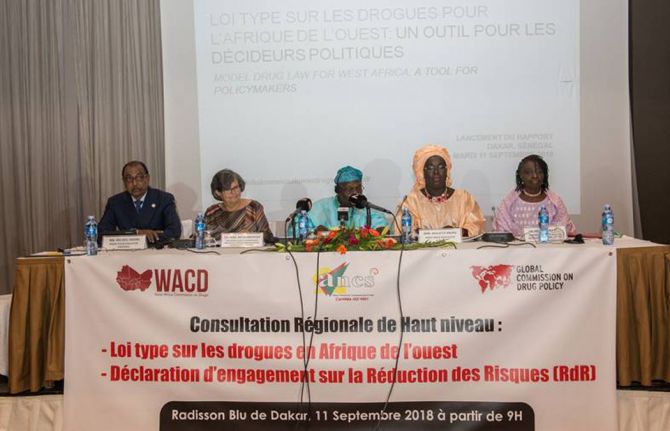
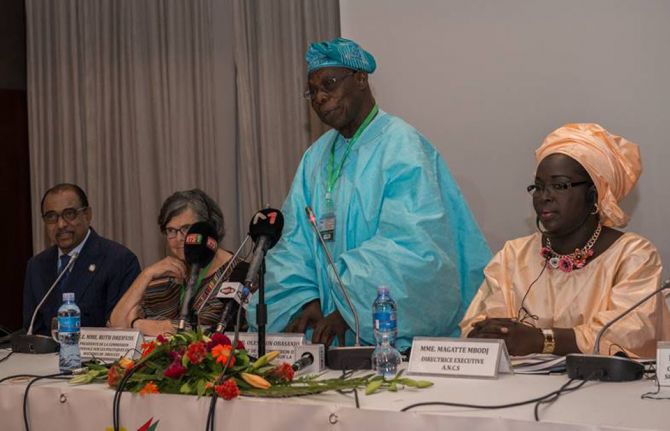
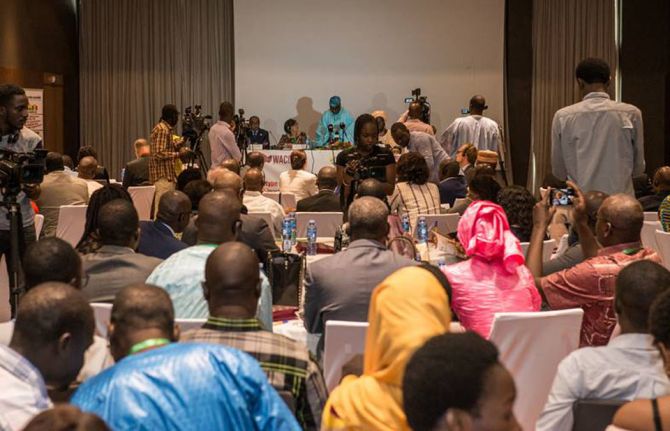
Feature Story
New model drug law launched in western Africa
12 September 2018
12 September 2018 12 September 2018Unjust laws can prevent people from accessing the services they need to prevent or treat HIV, and people who use drugs need help and care, not punishment—these are two of the messages from the new Model Drug Law for West Africa. Launched on11 September in Dakar, Senegal, the model drug law aims to guide policy-makers in the region on how to better frame their drug laws.
It is increasingly recognized that the current drug laws are not effective and result in enormous costs. The model drug law shows how countries can modify their laws in order protect the health and welfare of people while at the same time allowing law enforcement to focus on the most serious drug offences.
“The risk of acquiring HIV is 23 times higher among people who inject drugs, yet they still face human rights abuses, punitive legal environments and are left out of health and HIV programming,” said Michel Sidibé, Executive Director of UNAIDS. “It is essential that countries take a human rights-based approach that is grounded in scientific evidence and includes critical harm reduction services to protect the health and welfare of people who inject drugs and their communities.”
Drawn up by the West Africa Commission on Drugs, a group convened by Kofi Annan comprising experts from western Africa, the model drug law notes that barriers to accessing health services for people who use drugs need to be removed. People who inject drugs are one of the groups at highest risk of exposure to HIV, but they remain marginalized and often out of reach of health and social services.
The model drug law suggests removing criminal penalties for people who use drugs and making harm reduction measures available. It has been shown that harm reduction works—when harm reduction services are made available, new HIV infections fall sharply. For drug use, and possession of drugs for personal use, the model drug law sets out alternatives to conviction and punishment.
“Our current drug laws stigmatize and penalize drug users. However, pushing them to the fringes of society or locking them up in ever increasing numbers will not solve the problem. On the contrary, it worsens health issues and puts enormous pressure on the already over-stretched criminal justice systems,” said Olusegun Obasanjo, former President of Nigeria and Chair of the West Africa Commission on Drugs.
The model drug law also seeks to enhance access to essential medicines such as morphine and other opioids to manage pain. Many people in western Africa are denied the pain-relieving medicines that they need because doctors and other health professionals are not prescribing opioids for fear of prosecution. The model drug law suggests special protection for medical staff to help remove barriers to accessing pain relief.
Experience around the world has shown that it is possible to change drug laws for the better. The new model drug law is a step towards making such changes in western Africa.
Region/country
Related


Feature Story
UNAIDS again commended as the only UN body to meet or exceed all requirements of the UN Action Plan on Gender Equality
13 September 2018
13 September 2018 13 September 2018For the second year in a row, UNAIDS has been recognized for meeting or exceeding all of the performance indicators of the United Nations System-Wide Action Plan on Gender Equality and the Empowerment of Women (UN-SWAP). UNAIDS was the first United Nations entity to achieve this and remains the only one to date.
In a letter sent by Phumzile Mlambo-Ngcuka, Executive Director of UN Women, to Michel Sidibé, Executive Director of UNAIDS, she congratulates UNAIDS for achieving gender parity at the professional and higher levels, as well as for having mainstreamed gender equality work objectives and learning objectives into its performance management tools.
Since the inception of UN-SWAP in 2012, UNAIDS has demonstrated continued progress and remains committed to continuing to improve its UN-SWAP scoring. In the UNAIDS Secretariat Gender Action Plan 2018–2023, launched in June of this year, the organization set a series of targets that will help to ensure that UNAIDS sustains and advances its commitment to gender equality and the empowerment of women in the workplace.
The targets include:
- Target 1: 50:50 gender parity across all staff levels and categories.
- Target 2: 100% of staff at all levels set a work and learning objective on gender.
- Target 3: 100% of eligible UNAIDS female staff to participate in the UNAIDS Women’s Leadership Programme and 100% of eligible UNAIDS staff to participate in the Mentoring Programme for Women.
- Target 4: 100% compliance with the UN-SWAP 2.0 framework.
UN-SWAP is a United Nations system-wide accountability framework designed to measure, monitor and drive progress towards a common set of standards for the achievement of gender equality and the empowerment of women.
Quotes
“UNAIDS is proud to have not only achieved full compliance with UN-SWAP, but to also continue to improve year on year. We are committed to building an organization where gender equality is at the centre of what we do and how we operate, and UN-SWAP is helping us to do that by providing us with concrete benchmarks.”
System-wide reporting results between 2012 and 2017

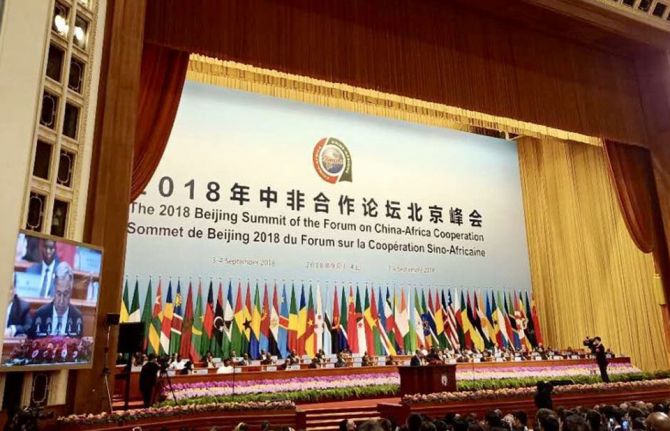
Feature Story
Leaders from China and Africa come together to build stronger and healthier communities
10 September 2018
10 September 2018 10 September 2018Leaders from African countries and China met in Beijing, China, during the 2018 Beijing Summit of the Forum on China–Africa Cooperation (FOCAC) on 3 and 4 September to accelerate the social and economic development of Africa. Under the theme of “China and Africa: toward an even stronger community with a shared future through win–win cooperation”, the two-day summit served to further enhance Africa–China collaboration in eight key areas: industrial promotion, infrastructure connectivity, trade facilitation, green development, capacity-building, health care, people-to-people exchanges and peace and security. China’s President, Xi Jinping, also announced a US$ 60 billion package of aid, investments and loans to Africa.
During the official opening, the President of China emphasized that Africa has a lot of potential and is a continent full of hope. He said that China would launch a health-care initiative and that information cooperation and exchange on public health would be intensified. Cooperation programmes will be launched on the prevention and control of emerging and re-emerging communicable diseases, schistosomiasis, HIV and malaria.
The current Co-Chair of FOCAC, Cyril Ramaphosa, the President of South Africa, welcomed the new FOCAC initiatives, which will have a significant and lasting impact on peace, stability and sustainable development on the African continent. The current Chairperson of the African Union, Paul Kagame, the President of Rwanda, said that African countries will intensify work on industry, infrastructure and trade. Antonio Guterres, the United Nations Secretary-General, described FOCAC as an embodiment of two major priorities of the United Nations: to pursue fair globalization and to promote development that leaves no one behind. The Chairperson of the African Union Commission, Moussa Faki Mahamat, highlighted the need to further create synergy between the African Union’s Agenda 2063 and China’s Belt and Road Initiative.
Leaders agreed the Beijing Declaration and the Beijing Action Plan, which will serve as a blueprint for further cooperation between China and Africa in the next three years. The outcome documents, which list ending AIDS and halting and reversing HIV (together with tuberculosis and malaria) as part of the China–Africa health cooperation, also focus on sustainability in health and included the local production of medicines in Africa, strengthening systems and developing public health worker capacity as essential to achieving universal health care.
In bilateral meetings with the Presidents of Côte d’Ivoire, Equatorial Guinea, Mali and Sierra Leone, Michel Sidibé, the Executive Director of UNAIDS, highlighted the important contribution that China–Africa health cooperation can make to improving access to medicines and local pharmaceutical production in Africa.
The African Union endorsed the 2 million community health workers for Africa initiative, which was raised in the bilateral meeting with the President of Sierra Leone. Explaining to Mr Sidibé that he had recently visited a maternity hospital and learned that there are just two gynaecologists in the entire country, the President sees the community health worker approach as a key way to ensure that people are reached with essential health services.
Mr Sidibé met with the China–Africa Business Council, which also chairs the China–Africa Health Industry Alliance. China–Africa cooperation can generate transformational changes in health and provide a platform to find people-centred solutions for ending AIDS and expanding universal health coverage.
Resources
Region/country

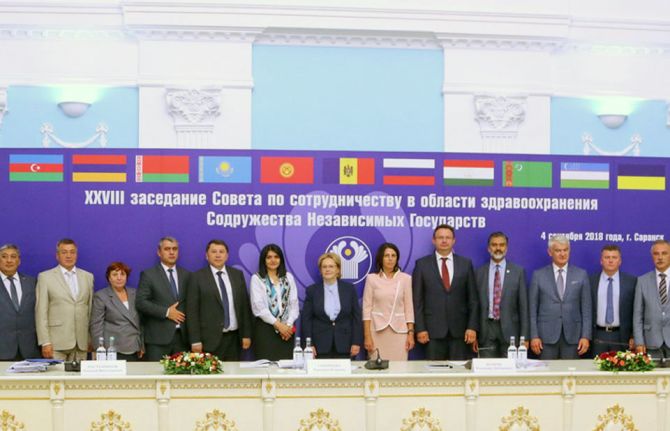
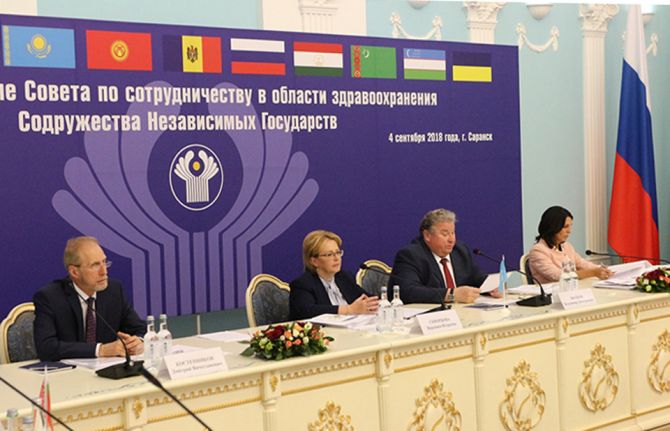
Feature Story
Russian Federation commits to reach 75% antiretroviral therapy coverage in 2019
12 September 2018
12 September 2018 12 September 2018The Russian Minister of Health, Veronika Skvortsova, has reiterated the commitment to reach the targets agreed at the 2016 United Nations General Assembly High-Level Meeting on Ending AIDS.
“We have to provide every person living with HIV with quick access to the correct treatment. The Ministry of Health plans to increase the coverage of people living with HIV who know their status on antiretroviral therapy to 75% by 2019, and by 2020 the figure should reach 90%,” said Ms Skvortsova at the 28th meeting of the Health Council of the Commonwealth of Independent States, held in Saransk, Russian Federation, on 4 September 2018.
In 2018, the Russian Federation reported for the first time on national progress towards the 90–90–90 targets—in 2017, 81% of people living with HIV in the Russian Federation knew their status, 45% who knew their status were on treatment and 75% who were on treatment were virally suppressed.
In order to improve strategic information and build evidence for decision-making at the local level, the Russian Ministry of Health recently conducted a workshop on HIV estimates for representatives of 10 Russian regions. Regional experts were trained on modelling HIV estimates, which will help to ensure a more complete picture of the number of people living with HIV and of the 90–90–90 targets at the subnational level.
Eastern Europe and central Asia is the only region in which the numbers of new HIV infections and AIDS-related death are still on the rise. At the end of 2017, the number of new HIV infections in the region reached 130 000. At the end of 2017, it was estimated that the 90–90–90 cascade in the region was 73%, 50% and 72%.
“The Russian Minister of Health’s statement is another important step in a series of consistent actions undertaken by the Government of the Russian Federation to accelerate the country’s Fast-Track approach to reach 90–90–90 by 2020,” said Vinay P. Saldanha, Director of the Regional Support Team for Eastern Europe and Central Asia.
Region/country
Related

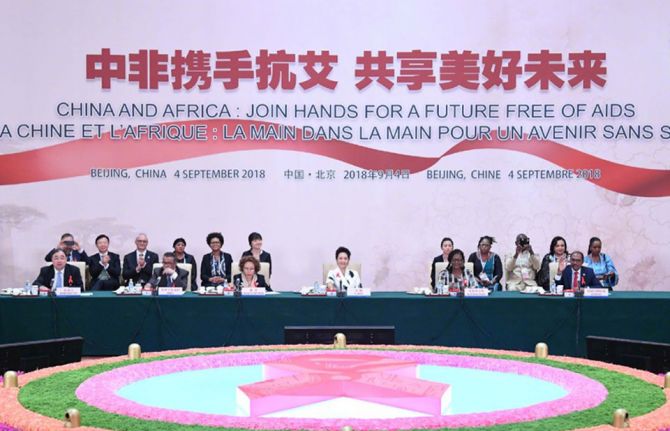
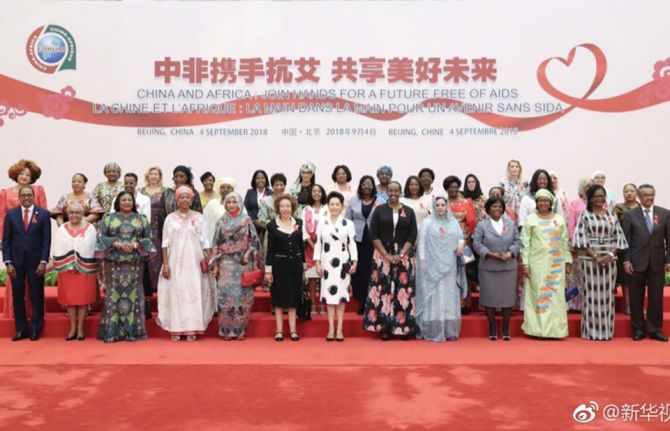
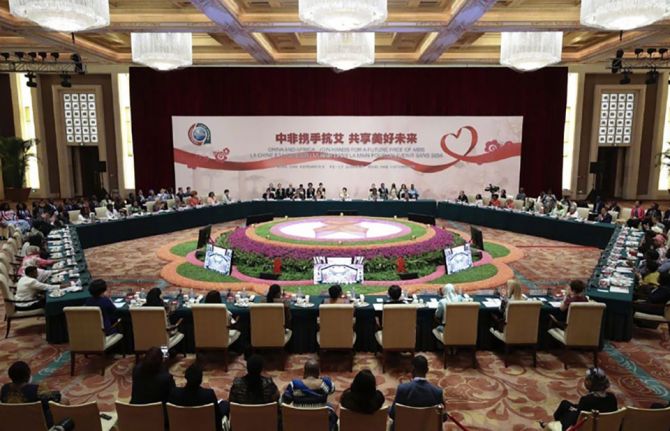
Feature Story
First ladies from Africa and China working towards a future free from AIDS
05 September 2018
05 September 2018 05 September 2018First ladies from across Africa and the First Lady of China, Peng Liyuan, have reaffirmed their commitment to a future free from AIDS by spearheading a new joint initiative to prevent HIV among young people. China will work with African countries and international organizations to implement a three-year health promotion and HIV prevention advocacy programme for adolescents, starting in 2019.
The China–Africa advocacy campaign was launched on 4 September on the margins of the 2018 Beijing Summit of the Forum on China–Africa Cooperation (FOCAC), in Beijing, China. The campaign aims to increase young people’s access to integrated sexual and reproductive health and HIV services and strengthen their engagement in the AIDS response.
Globally, there are around 3.9 million young people between the ages of 15 and 24 years living with HIV. Around 1600 young people acquire HIV every day and a young person dies every 10 minutes from of an AIDS-related illness.
Michel Sidibé, the Executive Director of UNAIDS, thanked the first ladies for their collective action in the AIDS response and urged them to continue their high-level advocacy to mobilize resources to support youth engagement for HIV prevention, treatment and care. “Engaging young people means supporting them as partners and leaders in the AIDS response,” said Mr Sidibé. “We will only pick up the pace if we work closely with young people.”
Discussions during the event focused on addressing what puts young people at risk of HIV, including stigma, discrimination, gender-based violence and limited access to reproductive health services and information. The first ladies recognized that ending the AIDS epidemic among adolescents and young people requires amplifying investments where they can make the most difference, such as comprehensive sexuality education, and fostering innovative and multisectoral HIV prevention programmes.
During the event, Tedros Adhanom Ghebreyesus, the Director-General of the World Health Organization, spoke about HIV/tuberculosis coinfection. Tuberculosis is a leading cause of death of people living with HIV.
The first ladies of Africa and China will join forces to stop new HIV infections among young people by sharing information, helping each other to build expertise and mobilizing resources for joint advocacy for HIV prevention.
The first ladies’ HIV advocacy event concluded with the endorsement of a joint statement that calls on governments to ensure HIV prevention, treatment, care and support services and universal health coverage, especially for young people, in order to ultimately reach the goal of ending the AIDS epidemic by 2030.
On the sidelines of FOCAC, Mr Sidibé and the First Lady of Malawi, Gertrude Mutharika, met with StarTimes to explore how best to harness new technologies to reach young people with HIV prevention services. StarTimes is using its platform to share HIV prevention and awareness messages through digital television and its new social media application.
Resources
Region/country

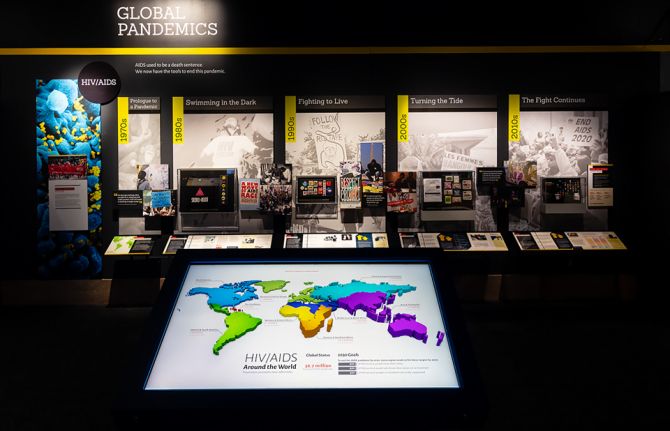
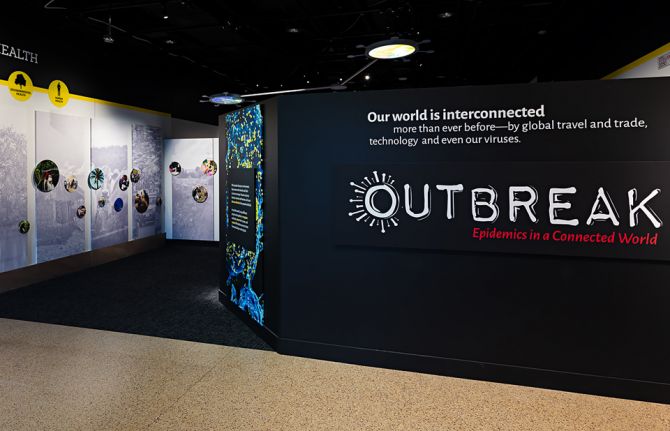

Feature Story
Smithsonian exhibition features UNAIDS data in a look at various viruses
21 August 2018
21 August 2018 21 August 2018An infectious disease can spread around the world in days. Human factors that have quickened the pace of virus transmission include the growing global population, urbanization and the industrialization of food production. The Smithsonian’s National Museum of Natural History in the United States of America features nine diseases that have spilled over from animals to humans in its newly opened exhibition, Outbreak: Epidemics in a Connected World.
One hundred years after the influenza pandemic, the three-year-long exhibition sheds a light on the causes of disease outbreaks such as Nipah virus and severe acute respiratory syndrome (SARS) and the various responses to epidemics.
“The 2014 Ebola outbreak in western Africa was the catalyst, but we wanted to have HIV—the pandemic of our time—as a big focus of the exhibition,” said Sabrina Sholts, the lead curator. For HIV, the museum created a three-dimensional timeline showing the landmarks of the AIDS response in the United States, from the activism to the science to the policy changes and treatment. Objects such as red ribbon pins, ACT UP T-shirts with a pink triangle with the saying Silence=Death, condoms, antiretroviral medicine bottles and photos guide visitors from the start of the HIV epidemic until now. A large touch table allows for people to explore new infections around the world today based on the latest UNAIDS data.
“We didn’t want to leave the impression that AIDS is over and limited to one place, so the interactive component resonates with people as to where we stand right now,” said Ms Sholts.
The UNAIDS Strategic Information Department worked with Ms Sholts’ team and provided specific epidemiological data. Timely and accurate data on diseases are the clues to trends in an epidemic. Displaying and using those data are critical pieces of our work,” senior UNAIDS epidemiologist Mary Mahy said.
Ms Sholts admits that making the data visually engaging was a challenge, but by simplifying the language and adding context, the digital interactive centerpiece works well.
The curator’s aim was to have visitors understand the varying difficulties of getting people to know their HIV status and ultimately the long-term benefits that that entails.
“Diseases are scary stuff, so for every dire challenge or obstacle, we created an “on the upside” component to highlight a success story or uplifting angle,” she said. For the HIV pandemic, the upsides focus on various organizations serving people in need, like the Ponce de Leon Center in Georgia, United States.
She explained that the main goal of Outbreak is to raise public awareness about pandemic risks with the perspective that human, animal and environmental health are all connected as one.
The exhibition also showcases a mock-up of an Ebola treatment ward and a game, played on touch screens, that has visitors simulate a variety of roles—epidemiologist, wildlife biologist or community worker—to complete tasks as a team to end an outbreak.
Part of Outbreak focuses on the detective work involved in tracking down and containing diseases. Future viruses are inevitable, which is why understanding human influence on their emergence and development is key.
Touching wild animals, a lack of vaccination, unprotected sex and travelling when sick all contribute to a virus’ proliferation, linking distant and diverse populations to each other beyond their communities, countries and continents. The response to these diseases, therefore, must also involve everyone.
“We are all connected, we all matter and we have to think holistically, collaboratively and collectively,” Ms Sholts said.
For those not travelling to Washington, DC, the Smithsonian has a free pared-down version of the exhibition—including the UNAIDS interactive display—available for translation and customization worldwide.

